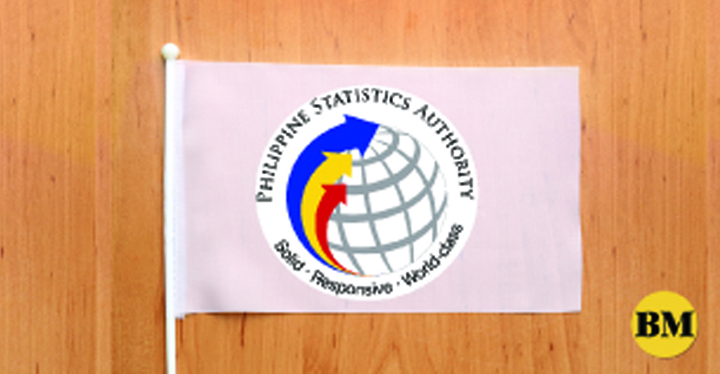
THE country’s export earnings posted a positive growth for the first time in six months in May 2023, with electronic products accounting for 57.5 percent or the largest share in the country’s exports pie, according to the Philippine Statistics Authority (PSA).
Figures from the PSA showed the country’s export earnings increased by 1.9 percent to US$6.44 billion from the $6.32 billion recorded in the same month last year.
“The commodity group with the highest annual growth in the value of exports in May 2023 was electronic products, which rose by US$231.53 million,” PSA said.
This was followed by ignition wiring set and other wiring sets used in vehicles, aircraft and ships, which increased by US$75.98 million; and copper concentrates, rising by US$73.75 million.
Total export earnings in the first five months of the year amounted to US$28.21 billion. This represented a decline of 11.5 percent from the year-to-date annual total export value of US$31.89 billion in the same period last year.
Imports
Meanwhile, the country’s total import bill contracted by 8.8 percent year-on-year to $10.84 billion in May.
In April, it recorded an annual decline of 15 percent, while in May 2022, it exhibited a double-digit annual increase of 30.2 percent.
With this, the country recorded a trade deficit of $4.40 billion, which is narrower by 20.9 percent compared to the $5.56 billion in May 2022 and the previous month’s $4.8 billion.
PSA data showed that in April 2023, the trade deficit recorded an annual decline of 9 percent and in May 2022, it posted an annual increase of 74.9 percent.
The 20.9 percent decline in the trade deficit recorded in May 2023 is the narrowest since November 2022, which posted a 21-percent decline.
“The balance of trade in goods [BoT-G] is the difference between the value of export and import,” the PSA said.
For his part, Rizal Commercial Banking Corporation (RCBC) Chief Economist Michael Ricafort said, “Trade deficit/Net imports already among the narrowest in more than a year, thereby partly supporting the stronger peso exchange rate recently [peso among the strongest in 2 months]; also after relatively lower global oil and other commodity prices amid risk of recession in the US.”
Further, Ricafort said, “still relatively higher prices/inflation and interest rates/borrowing costs, locally and globally, also partly weighed on demand for some imports that helped narrow the trade deficit/net imports.”
As for the exports growth, he said exports recovered to six-month highs after the pickup in electronic/semiconductor exports, which are the country’s largest exports. The growth in exports may be attributed, he said, to the easing of prices, “especially lower prices of global oil and other major commodities that reduced the input costs of exporters.”
In May, the country’s total external trade in goods amounted to US$17.28 billion, which indicates an annual decline of 5.1 percent from the US$18.20 billion recorded in the same period last year.
In April its annual decrease was recorded at 16.8 percent, while in May 2022, it expanded at an annual rate of 20.8 percent.
Of the total external trade in May 2023, the PSA said 62.7 percent were imported goods, while the rest were exported goods.
China top export, import destination
According to the PSA, the People’s Republic of China was the country’s top export and import destination.
China accounted for the highest export value amounting to US$1.07 billion or a share of 16.6 percent to the country’s total exports during the month.
Other top export markets are the United States with US$1.01 billion or 15.7 percent of the total; Japan with US$930.56 million or 14.4 percent; Hong Kong with US$665 million or 10.3 percent, and Netherlands with US$346.65 million or 5.4 percent.
Meanwhile, China was also the country’s biggest supplier of imported goods valued at US$2.60 billion or 24 percent of the country’s total imports in May 2023.
Other top sources of imports were Indonesia which accounted for US$917.05 million or 8.5 percent of the country’s import receipts; Japan, US$794.92 million or 7.3 percent; US, US$724.44 million,6.7 percent; and Republic of Korea, US$712.79 million or 6.6 percent.
